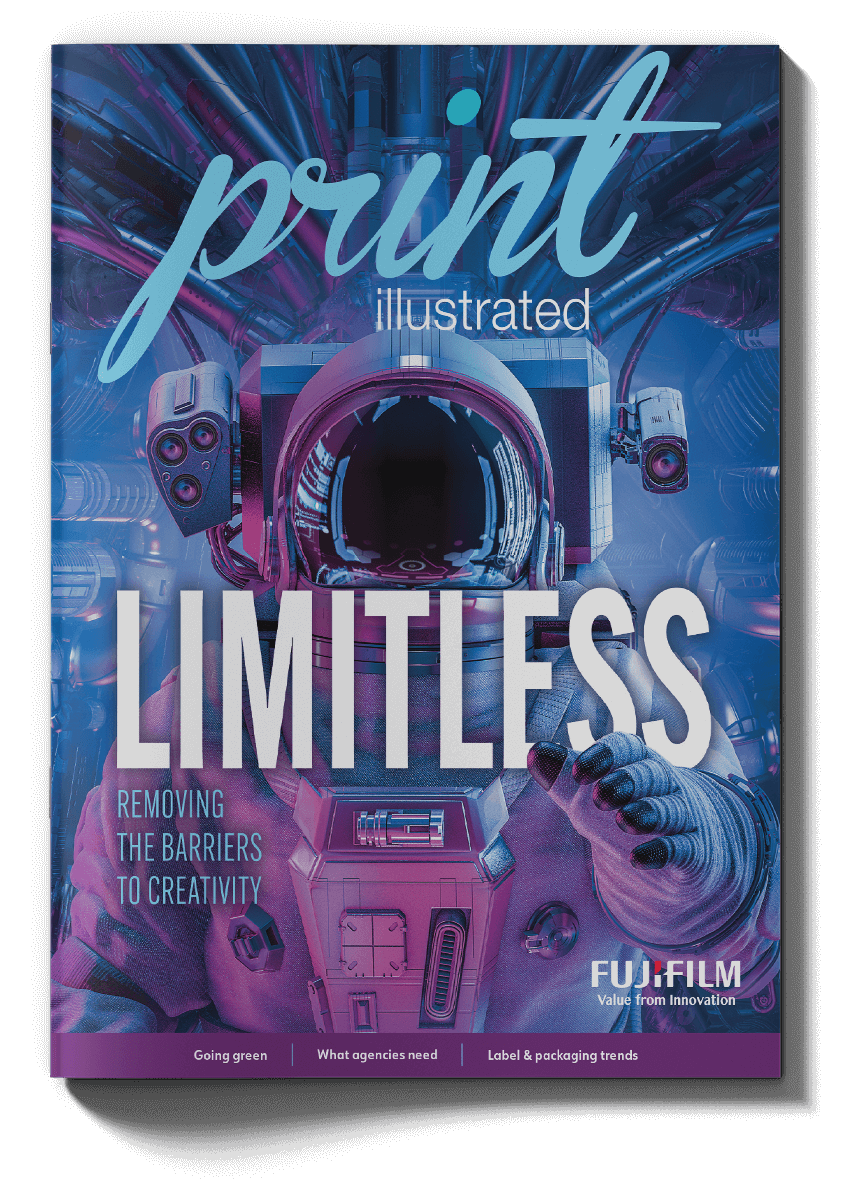These are interesting days for today’s creative agencies. Ask Billy Mitchell and he’ll tell you that his agency isn’t necessarily doing more for its clients than it did two years or so ago, it’s just that the mix of what it does is very different. Not that long ago, everyone, everywhere was touting the power and promise of the digital landscape. So, as an agency, your value proposition had to key in on how you could get a potential client to the digital nirvana it so wanted.
What changed?
Mitchell, founding partner of Atlanta-based B2B marketing agency MLT Creative, says print changed—or the newfound love of what it means to today’s marketing value proposition. Today, when he sits down with his clients, the conversations include more of the print factor, which means MLT Creative’s value proposition has refocused. “It’s different because so much about the marketing ecosystem is evolving. We have deep experience in both digital and print media, and our strategies and successful implementations reflect that.”
Meeting in the middle to meld the value in those creative pursuits is where today’s agencies shine. Being able to effectively and succinctly translate what a client wants and needs is where the real talent takes place.
Above all else, an agency must be who they are and show why that matters. That means developing a strategy and messaging map before anything else. Areas include creating buyer personas for target audiences and refining messaging to make messaging more personal and relevant. And then, you have to deliver this value proposition throughout everything your client has: website, digital and print marketing materials, etc.
“You should create a profile of your product or service. Consider who it is designed to help, how it alleviates some of their pain points, and how it adds value to them.”
– Alaina Chiappone, Publicist, Otter PR
“It must be within every proposal,” Mitchell says. “I can’t imagine a communication strategy for marketing purposes without at least one value proposition. Don’t be generic. Make it mean something to your prospects and current customers.”
On its end, the MLT Creative team welcomes relevant research from anywhere they can get it, especially when it comes from their strategic partners. For example, data on the various industries the MLT Creative clients market with its value. Things like lists, trends, competitive intelligence, account-based marketing intelligence on specific targets, etc. And last, but certainly not least, referrals.
By fine-tuning your agency’s value proposition, Alaina Chiappone believes you are helping your prospective and existing customers see the same light you see. Think about their needs and pain points and problems—what inhibits them from resolving those needs?
“Consider what they would expect of a product or service designed to help them resolve their needs,” says Chiappone, publicist for Otter PR, a leading results-driven agency in Orlando, Florida. “You should create a profile of your product or service. Consider who it is designed to help, how it alleviates some of their pain points, and how it adds value to them.”
Chiappone says your value proposition will help you get to the core of your overall messaging. If you cannot communicate why your potential customers need your product or service, they will not be able to identify why they would need it, either. More importantly, your messaging must be continually evaluated.
“As consumer values evolve, it’s important to re-examine your value proposition,” Chiappone says. “Today’s consumers want more options that are good for their health and for the environment at an affordable price. These changing values may shift the problems your customers face, and therefore the solutions you will provide. You can repurpose the main points of your value proposition to fit different channels of communication like your social media, blogs, testimonials or ads.”

Follow the trends
Supply chain. Staffing. Sustainability. Each of these trends today impact the core of what your agency offers. Areas like the supply chain and staffing issues are indirectly related to your value proposition. So, while they may be more pressing issues for your clients’ frustration or result in higher costs, they often are not issues that directly affect how your agency’s product or service solves a problem for your clients.
“Unless you offer industry-changing solutions to supply chain or staffing issues, leave them out of the value proposition and address them in other forms of messaging,” Chiappone says.
While global and local supply chain issues slowed business for some of MLT Creative’s clients, the agency saw too many cutbacks in their marketing efforts. “We are nimble enough that we can help our clients respond to most challenges as opportunities,” Mitchell says. “If the pie is shrinking, we help them get a bigger piece of the smaller pie.”
As for staffing, MLT Creative has been around long enough to have survived recessions and other challenges. Several years before COVID hit, it had down-sized its team, which helped it become more efficient and successful. “Prior to COVID, we had made an exception for one key employee to work remotely, although I had serious reservations,” Mitchell says. “I was proved wrong, which helped us adapt to the whole team working remotely.”
“I can’t imagine a communication strategy for marketing purposes without at least one value proposition. Don’t be generic. Make it mean something to your prospects and current customers.”
– Billy Mitchell, Founding Partner, MLT Creative
Today, the MLT Creative team still is working remotely and may shift to a more hybrid model at some point down the road. “As our client contacts are either moving back to the office, working a hybrid model or continuing remotely, we haven’t missed a beat on personal engagement and prompt response.”
Another trend that has grabbed headlines over the past few years is sustainability. And while it is vital to many agency clients, some still view sustainability as a “nice-to-have” and not a driving purchasing factor. Chiappone recommends clarifying this in your ideal targeted customer to determine if it should be included in your value proposition or used in supplemental messaging.
“Sustainability may be a different case,” she says. “If your product or service offers a cutting-edge sustainable solution and your targeted customer places an emphasis on sustainability, it would be worthwhile to include in your value proposition.”
Today, as designers and agencies continue to define themselves differently, the key is to stay in step with what your prospective and existing clients want to say. To get—and keep—a seat at the table, you must be ready to ingrain yourself in the key points, trends and challenges impacting their messaging strategies.

